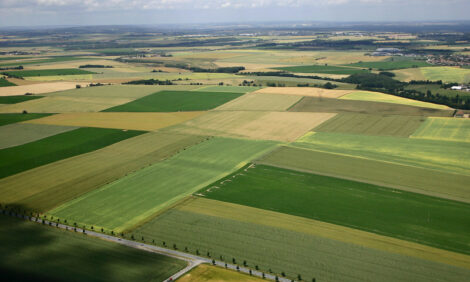



Higher Grain Prices Could Have Long-Lasting Effect on Livestock
US - High grain prices continue to take a toll on the livestock sector as higher feed costs erode profit margins and lower bids for beef cattle, pork and related markets, according to a Texas A&M AgriLife Extension economist.“The high grain prices have had more of a direct impact on the livestock sector than anything,” said Dr Mark Welch, AgriLife Extension grains marketing economist in College Station. “It will take some time to adjust to this. We are seeing fewer broiler chicks placed on feed through 2012. The sow slaughter is above the five-year average. The drought has pushed more cattle to feedlots, but also has increased herd culling.”
Dr Welch said over time the profit potential in the livestock sector and the long-term implications for feed in the future “will mean lower feed demand in response to lower livestock and poultry numbers.”
Overall, Dr Welch said economists are still trying to get a firm number on the nation’s overall grain supply for 2012.
“The early indications are 2 billion bushels below last year’s crop,” he said. “US Department of Agriculture reports are stabilizing now, but we are at yield-reduction levels comparable to the 1988 drought.”
Welch said latest field surveys indicate a national yield of 120 bushels per acre, 3 bushels below USDA’s August yield report.
“It looks like we are on track for 120 bushels an acre,” he said. “The question is once we get the supply situation settled, how far have we cut back on usage? We’ve cut back on ethanol use, feed use, and we’re pulling back on the exports market. Given the high prices that we are seeing, we are probably about where we need to be.”
Meanwhile, food prices will continue to be a target of higher corn prices.
“It certainly will have some influence over time,” Dr Welch said. “We need to remember as dramatic a price jump as this has been, this rally is only a couple of months old. It started in mid-June and it will take some time get through this.”
Moderate energy prices have helped curtail any drastic increases in food prices, Dr Welch said. Gasoline and diesel prices have been absorbed by manufacturers of food products and transportation costs have been held in check.
In the meantime, Welch said he doesn’t see a dramatic increase in Texas corn acres in 2013.
Texas does not have ideal growing conditions for corn due to hot temperatures and water restrictions in some aquifers, hampering irrigation potential, he said. Dr Welch noted the Ogallala aquifer as an example.
“Farmers are squeezing all of the efficiencies they can and trying to hang onto the acres they have for existing crops,” Dr Welch said. “There is the possibility for a dryland shift into grain sorghum, but I think that’s limited.”



